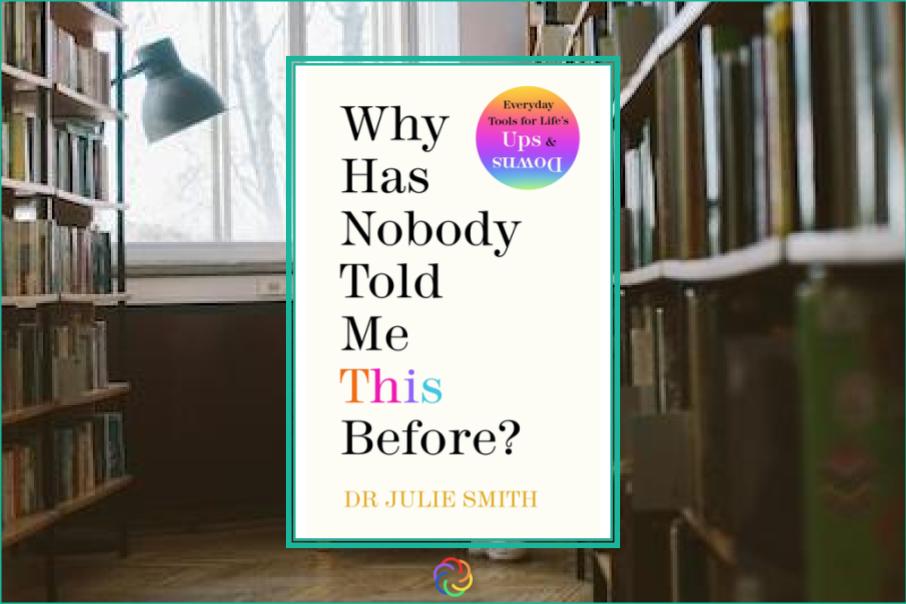Background and Reception
Dr. Julie Smith, a clinical psychologist with a thriving online presence, wrote this book to make the tools of therapy accessible to all. Her relatable and friendly tone, coupled with practical strategies, has made the book a hit worldwide. Since its release in 2022, it has received praise from readers and professionals alike for demystifying mental health and providing actionable advice.
Celebrities and institutions have endorsed the book for its approachable yet scientifically grounded content. It’s not just a self-help guide; it’s a manual for anyone seeking to better understand their mind and emotions.
Key Themes and Insights
Dr. Smith organizes the book into focused chapters, each addressing a common emotional or mental health challenge, including low mood, anxiety, motivation, grief, and resilience. Let’s explore the most compelling takeaways.
1. Low Mood: Understanding the “Why” Behind the “What”
When experiencing a low mood, many people attempt to “snap out of it.” Dr. Smith encourages readers to approach these feelings with curiosity rather than resistance: “Instead of asking, ‘What’s wrong with me?’ ask, ‘What is my mind trying to tell me?’”
She highlights that emotions, even unpleasant ones, serve as signals. Ignoring them often worsens the situation. Through techniques like journaling and self-reflection, readers can pinpoint the causes of their distress and take incremental steps to address them.
Example: If someone feels irritable without knowing why, writing down recent events or unmet needs can uncover patterns, such as lack of sleep or feelings of unacknowledged stress.
2. Anxiety: Grounding Yourself in the Present
Anxiety often thrives on what-ifs and worst-case scenarios. Dr. Smith offers a practical toolkit to counteract these thoughts, emphasizing the importance of focusing on what’s within your control: “Anxiety thrives on uncertainty. The antidote is action, no matter how small.”
One standout technique is the “5-4-3-2-1” grounding method:
- 5: Identify five things you can see.
- 4: Name four things you can touch.
- 3: List three things you can hear.
- 2: Recognize two things you can smell.
- 1: Focus on one thing you can taste.
This method shifts attention away from anxious thoughts and brings focus to the present moment.
Research Tie-In: Dr. Smith references cognitive-behavioral therapy (CBT), which underscores that changing focus can disrupt negative thought loops. Studies in neuroscience confirm that mindful exercises like this can activate the parasympathetic nervous system, reducing anxiety symptoms.
3. Motivation: Don’t Wait—Act First
One of the book’s transformative ideas is reversing the traditional belief that motivation precedes action. Dr. Smith asserts: “Motivation is the byproduct of action, not the cause of it.”
When feeling stuck, starting small is key. She provides simple yet effective strategies to overcome inertia. For instance, if you’re struggling to exercise, begin by putting on your workout clothes. Taking that initial step often generates the momentum needed to keep going.
Example: A reader procrastinating on a big project could start by organizing their workspace. This small victory can snowball into tackling larger tasks.
4. Grief: Honoring the Process
Grief is often misunderstood as something to be “fixed” or “moved past.” Dr. Smith challenges this notion, offering a deeply compassionate perspective: “Grief is not a sign of weakness. It is the price we pay for love.”
She suggests creating personal rituals to process loss. These rituals—whether writing letters to a loved one, creating memory boxes, or dedicating moments of silence—help channel overwhelming emotions into meaningful actions.
Real-World Application: Smith recounts client stories where honoring grief through creative outlets, such as painting or storytelling, provided profound healing.
5. Resilience: The Muscle You Build
Resilience isn’t innate; it’s cultivated. Dr. Smith draws parallels between resilience and physical fitness: “Like a muscle, resilience grows stronger with use.”
The book encourages readers to develop mental habits that foster resilience, such as practicing gratitude, reframing challenges, and focusing on progress rather than perfection.
Gratitude in Action: Dr. Smith suggests keeping a “daily wins” journal, where readers record three small accomplishments or moments of joy each day. This shifts focus from what went wrong to what went well, rewiring the brain for positivity.
Chart Idea: A simple flowchart showing the “Resilience Cycle”:
- Challenge → 2. Action → 3. Reflection → 4. Growth → 5. Renewed Strength
The Science Behind the Advice
Dr. Smith skillfully incorporates psychological research into her advice. She explains concepts like neuroplasticity—the brain’s ability to change in response to repeated behavior. By practicing gratitude, mindfulness, or reframing thoughts, readers can literally reshape their brain for better mental health.
For example, studies show that gratitude journaling can increase happiness by 25% over just six weeks. Smith’s practical exercises harness these findings, making abstract ideas accessible.
Critiques: What the Book Could Do Better
While the book is highly praised for its practicality, some critics argue that it oversimplifies mental health challenges. Severe mental health conditions may require deeper, more personalized intervention than the book offers. Additionally, some readers may find the workbook-like format less engaging than a narrative approach.
Why This Book Stands Out
What makes Why Has Nobody Told Me This Before? so powerful is its blend of empathy, science, and practicality. Dr. Smith gives readers permission to feel, tools to process, and strategies to thrive. It’s a book for anyone—whether you’re facing a specific struggle or simply want to build emotional resilience.
This book doesn’t replace therapy, but it equips readers with tools to better navigate everyday challenges. It’s a reminder that mental health isn’t a luxury—it’s a lifelong practice.
Conclusion: A Toolkit for Life
If you’re looking for a guide that speaks to you with compassion and wisdom, Why Has Nobody Told Me This Before? is worth your time. Whether you’re managing anxiety, seeking motivation, or processing grief, this book offers tools to navigate life’s complexities with grace and strength.
Takeaway: Dr. Julie Smith delivers accessible, actionable wisdom to help you build emotional resilience and live a more fulfilling life.



